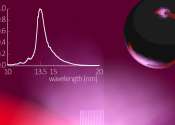Evidence found of ions behaving differently than expected in fusion reactions
A team of researchers at the National Ignition Facility (NIF) at the Lawrence Livermore National Laboratory, in California, has found evidence of ions behaving differently than expected in their fusion reactions.









